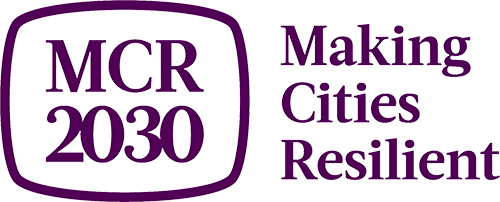Thematic Areas for Stage C cities
Stage C of the resilience roadmap focuses on supporting cities in the implementation of risk reduction and resilience actions.
Cities in this stage have a relatively robust DRR, resilience and sustainability plan in place and may be in the early stages of implementation or already working towards mainstreaming the DRR/resilience strategy and activities across its governments’ structure. These cities will be initially focused on improving their cross-sector governance structure, increasing their ability to access finance and to design and deliver resilient infrastructure, developing nature-based solutions and improving inclusion, and must demonstrate commitment to implement and mainstream DRR and resilience across all sectors and to share experiences with others. Cities certified with ISO37123 - Sustainable cities and communities will automatically join this stage.
Increasing access to finance
Supporting cities to move from planning to implementation will require access to investment finance. This will allow cities to implement activities including resilience building governance structures, adaptation initiatives, mitigation strategies, disaster and climate resilient infrastructure, etc. MCR2030 will strengthen local governments’ capacity to develop bankable projects for financing key DRR and resilience actions.
Sample resources and tools:
Ensuring resilient infrastructure
A city’s resilience depends largely on whether its infrastructure is resilient to disaster and climate risks. Critical infrastructure investment must be informed by historic loss and damage figures, combined with projected climate and risk/exposure/hazard scenarios.
Sample resources and tools:
Adopting nature-based solutions
Infrastructure resilience and a city’s environs cannot rely on over-engineered solutions. Cities need to incorporate their natural assets in building their resilience in a manner that maximises the deployment of natural features further adding to their sustainability.
Sample resources and tools:
Integrating climate risk into strategies and plans
Reducing exposure to hazards and risks is a cross-sectoral area of work. While historical disaster loss data can inform policies and plans, climate change is already rapidly changing parameters and modelling. Planners cannot depend only on historical data but will need to access scientific climate projections to understand future impact and be creative in finding solutions for future shocks and stresses. City governments will require support from universities, research organizations and scientists to understand future climate variability; technical expertise will be needed to incorporate climate risk projections into DRR and resilience strategy development.
Sample resources and tools:
Ensuring inclusion
Disaster risk is a combination of hazards, exposure and vulnerability. Everyone is affected by disaster risk, but not everyone is equally affected. The poorest and most vulnerable are hardest hit. DRR and resilience strategies must prioritise inclusion. This means improving the access and affordability of services which help vulnerable citizens to cope with shocks and stresses and improving their living conditions to avoid recurring exposures to hazards both natural and human-induced. To achieve this goal, incremental improvements in city services and conditions for the poorest and most vulnerable need to be integrated in a city’s DRR strategy.
Sample include UN-HABITAT’s five global flagship programs:
- Inclusive vibrant neighbourhoods and communities
- People focused smart cities
- RISE-UP: resilient settlements for the urban poor
- Inclusive cities enhancing the positive impacts of urban migration
- SDGs cities
Sample resources and tools:

